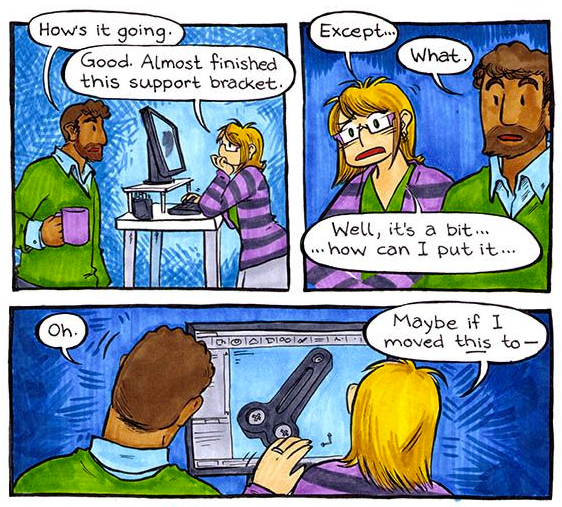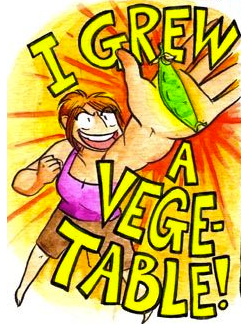Are journal webcomics more personal than, say, a typical blog? Both involve a certain level of voyeurism. It's not unwelcome, as the writer put a not-insignificant amount of effort chronicling their lives to the public, filtering moments to a key handful of anecdotes that hopefully someone, somewhere finds relatable or amusing. We get the sense of his or her speech patterns, experiencing what it would be like if we talked to the person.
There's an extra level of effort and intimacy when the writer is also drawing about her life. It's almost like seeing the world through her eyes: You see them how they see themselves, other people, and the world around them. We see firsthand what the artist finds amusing or daunting.
The most successful illustrated autobiography is probably Allie Brosh's Hyperbole and a Half, which related childhood memories through a combination of posted text and cartoony images. (The ... blog? ... comic? ... blogmic? ... has since been collected in a print edition published by Simon & Schuster.) For an experience closer to a pure sequential form, though, it's hard to go wrong with Angela "Jam" Melick's Wasted Talent.
Wasted Talent centers more on the day-by-day life of Ms. Melick, and we, the readers, follow her movements like the viewers watching The Truman Show. What do we know about her? Well, we know that she's an engineer, as we see her remark bemusedly at her career path. We follow her through classes in college. We see her at her first job, and then her search when that company folds. Then we see her discover that she's now the older engineer at her new job when previously she'd been with the younger crowd.
We also know she's in love through the many intimate (but not inappropriate) illustrations of her with her husband, as if we're in the room with them as they go about their daily lives. We see Melick as she tries out new hobbies, like mountain biking and sword fighting (in addition to writing and drawing a webcomic, naturally). We eventually get a picture of who Angela Melick is (or how she chooses to be portrayed): fun, outgoing, and competent.
In other words, a pretty normal life, but chronicled over the span of more than 670 strips. Kind of like American Splendor, only more pleasant and with the lush foliage of Vancouver as a backdrop. Melick colors the comic in what looks like a variety of art markers. The coloring is never uniform. You can see vertical and horizontal streaks where the color changes depending on how hard you're pressing the marker to paper. Coupled with her manga style, which gives her character a slightly chubby figure and a permanently wide-eyed expression, you get a sense that the world is being approached with a sense of childlike wonder ... as if there's a new adventure waiting around the corner.
It's a truly enviable quality. Melick already blazed a pretty unique trail by being both a cartoonist and a female engineer (which, speaking as a fellow engineer, is still something scarce in our modern day of equal opportunity employment). Wasted Talent is a misnomer: By putting her personal experiences to paper, Melick is unknowingly creating a time capsule in what it means to be a Canadian female engineer at the turn of the millennium. That's hardly wasted at all.


